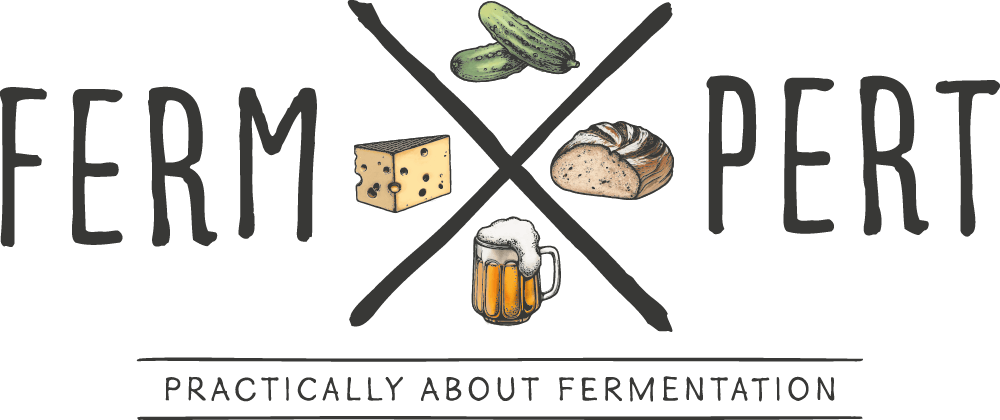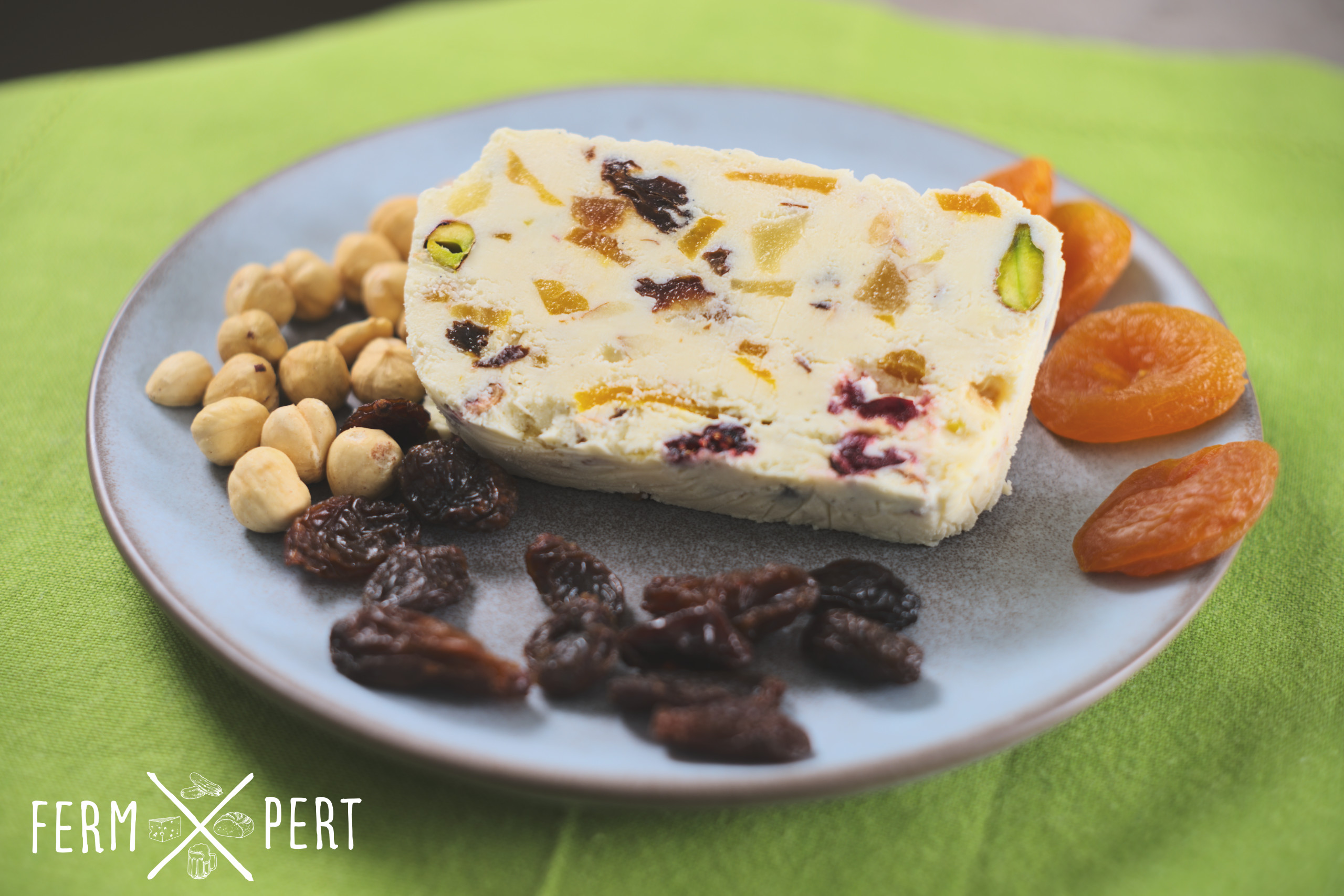It’s been served in my family home for years, usually around Easter. Paskha is a quark-based dessert with dried fruit and nuts, known in many Slavic countries. The name is a bit of tautology since the word Paskha (spelled Pascha in Polish) literally means Easter. Though I prepare it in an unconventional way, I’ll also describe the usual preparation.
Recipe
In the ingredients list, I deliberately don’t provide a mass measurement for the dried fruit and nuts since their choice and ratios are an individual choice and nuts are typically lighter than dried fruit. Instead, it’s better to measure by volume so that the inside of the paskha is well filled.
Ingredients
- 1 kg well strained quark
- approx. 3 cups dried fruit and nuts
- 300 g caster sugar
- 250 ml 30% fat sweet cream
- 200 g soft butter
- 5 eggs
- 1 vanilla pod
Method
If needed, chop the dried fruit and nuts (especially the larger ones, like almonds or dried apricots).
Separate the whites from the yolks. The whites aren’t used. Combine the yolks with sugar using an electric hand beater. Add cream. Heat in a water bath, constantly beating, until the mix reaches the temperature of 60°C (140°F). Remove the container from the water bath, beat in the butter. Mix in ground quark and the dried fruit and nuts. Stir until uniform, then chill.
I place the quark mass in bread tins lined with cling film. I put them in the freezer for a minimum of 12 hours. After this time, the paskha is frozen solid and it can be removed easily from the tins. I slice it and serve like ice cream.
The traditional way to serve paskha is different though. Place it in a strainer lined with muslin cloth or a clean flat cotton nappy. Place the strainer over a container in which excess whey can collect. Refrigerate for a minimum of 12 hours, then transfer the paskha upside down to a plate and remove the muslin cloth. Garnish and serve.
Video Transcription
One of the typical Easter foods in many Slavic countries is the Easter paskha. It’s a quark-based dessert filled to the brim with dried fruit. While typically served chilled, I’m making a frozen variant that I eat like ice cream. The full recipe is on the blog.
The main ingredient is quark. Mine is homemade, but store-bought is fine too. I’ll also be using caster sugar, soft butter, vanilla, a variety of dried fruit, eggs and sweet cream.
I start by preparing the dried fruit. I need to slice them. The choice of ingredients is an individual preference and pretty much any fruit or nuts can be used as long as they’re not salted. I’d avoid figs due to their seeds, but anything else is probably fine. I’m using dried apricots, raisins, dried cranberries, candied pineapple, toasted hazelnuts, unsalted pistachios and almonds.
I separate the yolks from the whites. I’m not going to use whites in this recipe; I’ll turn them into a batch of meringues. I add sugar to the yolks. I combine them using an electric hand beater. Then I add the cream and continue beating until smooth.
The next step is heating the mixture. I want to get it at hot as possible without cooking the yolks. They coagulate at 65°C (149°F) so I kill the heat a few degrees below that. The water bath ensures a gentle and even heat distribution. Still, I need to mix constantly, otherwise, the yolks might cook near the bottom. I use a pyrometer to check the temperature, but a regular thermometer will do just fine. Some people can estimate the temperature by simply dipping a finger in the mixture.
The egg mixture is hot enough. It’s time to add the remaining ingredients. First, I mix in the butter. It’s a good idea to pass the quark through a potato press or a meat grinder to get rid of the lumps. Finally, I add the dried fruit. Once everything is mixed, I can proceed to fill the containers. I’m using baking tins lined with cling film. This way I’ll be able to remove the frozen paskha from the tin easily when the time comes to serve it.
Here it is, frozen solid. As I’ve already mentioned, this dessert is not typically served this way and it’s enough to chill it. I find the frozen version more enjoyable.
Oh, this is so tasty. It’s just like ice cream, but it doesn’t melt as easily. The nuts and dried fruit provide different textures and a variety of flavours. Perfection!

